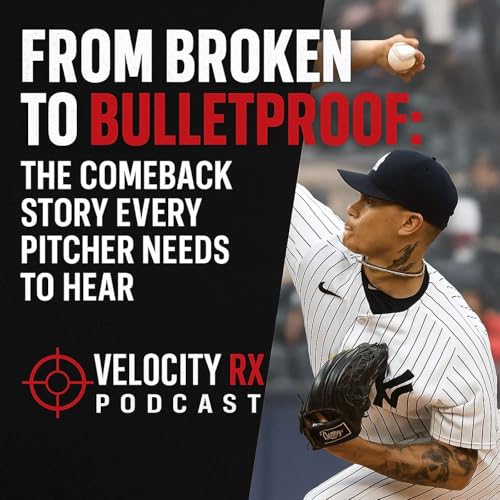
From Broken to Bulletproof: The Pattern That Saved a Pitcher’s Career
カートのアイテムが多すぎます
カートに追加できませんでした。
ウィッシュリストに追加できませんでした。
ほしい物リストの削除に失敗しました。
ポッドキャストのフォローに失敗しました
ポッドキャストのフォロー解除に失敗しました
-
ナレーター:
-
著者:
このコンテンツについて
Send us a text
A high school pitcher was told to rest, stretch, and wait it out—yet every week hurt more than the last. We took a different route: test how he moves under real conditions, then rebuild the pattern from the ground up. What we found was simple and powerful. His upper traps were calling the shots, his lat was stuck in neutral, and his pelvis and scapula were speaking different languages. Once we taught the shoulder blade to depress and the hips to hinge, pain gave way to clean mechanics and confident throws.
We walk you through the exact tests we used—the shoulder coordination test that exposes trap dominance, the squat screen that reveals pelvic control, and how serratus activation becomes the missing link for overhead athletes. You’ll hear why scapulohumeral rhythm matters for deceleration, how the lat connects shoulder and spine stability, and what changes when the body redistributes work from “always on” neck muscles to true stabilizers like lower traps and lats. The before-and-after details are striking: better thoracic extension, more space at end range, and a squat that preserves spinal curves while generating real force.
From there, we map the training plan that stuck: high-rep scapular depression with serratus, a catcher squat that grooves hip hinge and lordosis, and a steady ramp of throwing volume to 300 pain-free towel and ball throws a week. Along the way, we tackle the bigger lesson for players and parents—ask why every drill exists, demand a clear cause-and-effect, and measure what matters. If imaging is clean but movement is noisy, the fix is in the pattern. Subscribe for more case studies, share this with a pitcher who needs a roadmap back to the mound, and leave a review with your biggest takeaway so we can keep saving arms together.
Support the show
The Velocity Rx podcast mission is to help save one million arms by giving the very best mechanical, health, and arm care information to it's listeners.


